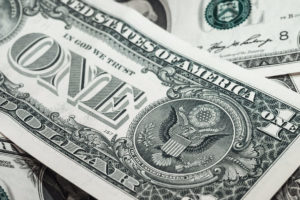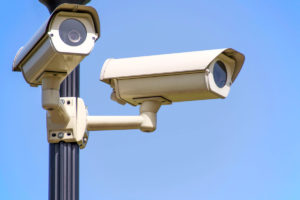Shrinkage and employee theft cost the retail industry an approximate $42 billion a year according to recent industry studies. Businesses around the globe lose less than merchants in the United States, but the quantity lost is still a tremendous amount that put retailers in a precarious position. In the United States, the study suggest that close to half of revenue lost is due to employee theft. The retail industry is aware that while shoplifting accounts for a lot of lost revenue, employee theft can be so much more devastating for their business.
To read more about this and other topics, follow the links below.
Law column: Dealing with employee theft
Policies, record keeping can help protect employers.
There recently has been a spate of news articles regarding theft and embezzlement from Iowa cities. Former city clerks in Delhi, Garwin and Vining are all alleged to have embezzled or improperly spent hundreds of thousands of taxpayer dollars.
In another instance, a former city clerk in Casey was even indicted on charges of burning down City Hall to hide her alleged theft.
As the above stories revealed, an employer may not discover the crime until years after it has begun during an official audit or when someone follows a hunch or notices an irregularity. The Iowa State Auditor warned cities to “trust but verify” employees that handle money.
Public employers are not alone. One study by a national supermarket organization found that its employees were responsible for around 56 percent of supermarket thefts.
Such theft included shoplifting, taking cash from registers and/or providing unauthorized customer discounts. Theft should always be a terminable offense.
Top safety tips to prevent shoplifting
Despite the prevalence of security cameras and high-tech alarm systems, shoplifting continues to be a concern for retailers across the country, with well-versed thieves easily able to outwit these technological barriers.
For business owners this alarming trend is especially unnerving, given their reliance on stock and increasing competition from online retail sites. Rather than simply accepting theft as part of business ownership, it is important that storeowners remain vigilant, enforcing appropriate preventative measures and learning to identify some of the key signs that could give a criminal away.
Here are a few top tips to bear in mind to avoid falling victim to shoplifting:
1. Know the signs
While not all shoplifters employ the same modus operandi, a few key behavioural traits should raise the alarm. Shoppers trying not to be noticed or walking around nervously are obvious candidates, as are those who loiter purposefully, picking up and putting back the same items repeatedly.
4 Home Depot workers in Palm Coast fired after helping nab suspected shoplifter
PALM COAST — Four Home Depot employees in Palm Coast say they are shocked, saddened, and left wondering why they were fired this week after helping to recover almost $1,000 in stolen store merchandise.
Jeffrey Miller, 59, of Palm Coast said he’d been working at the store on Garden Street for 10 years when he was fired Wednesday over a November incident in which he tried to help other employees stop a suspected shoplifter.
He said his help landed an already-wanted thief in jail, but a company spokesman said the interference was against national corporate policy.
“I was really shocked,” Miller said Thursday about being fired. “I never confronted this individual. Even if I saw him in a lineup I wouldn’t be able to show you what he looked like. All I was doing is getting a license plate (number).”

 According to the National Association for Shoplifting Prevention-NASP-there are 27 million people that shoplift in the United States today. That is 1 in 11
According to the National Association for Shoplifting Prevention-NASP-there are 27 million people that shoplift in the United States today. That is 1 in 11
 How did your retail business do in 2016? Face it, regardless of how well you did or did not do, you could have done much better. The key is to keep your cash, assets and merchandise on YOUR bottom line not someone else’s. Thieves take the money you could have had away, easily in some cases.
How did your retail business do in 2016? Face it, regardless of how well you did or did not do, you could have done much better. The key is to keep your cash, assets and merchandise on YOUR bottom line not someone else’s. Thieves take the money you could have had away, easily in some cases.

 drawer. IF someone reaches towards the drawer the register should be shut. Registers should be closed immediately following a transaction. If a cashier is sorting through the money or “straightening” they could be slipping money out and pocketing it or dropping money, then putting it in their pocket. Don’t “exchange” bills for patrons, there are some shoplifters who also engage in short changing and confusing cashiers and steal money using this method. Others will argue they did not get the right amount of change and start reaching in the till. If there is a dispute over change a manager needs to conduct a till audit with a partner, in the cash office. If there are enough registers in the store, limit one cashier to one register, when the cashier is done for the day, their money goes in their bag with a supervisor present and the supervisor drops it in the cash cart and rolls it to the cash office. Keep large bills under the till, if they are on top they are easy to see and easier for a grab and run. Consider purchasing locking till covers for registers that have money in them but are not currently in use. There are traveling shoplifting rings and till tap rings that have register keys and will open drawers if no one is paying attention. Till covers prevent someone from getting to the cash even if they open the drawer. Finally, when a register has too many large bills or excessive amounts of money, do a skim and take the excess to the cash office.
drawer. IF someone reaches towards the drawer the register should be shut. Registers should be closed immediately following a transaction. If a cashier is sorting through the money or “straightening” they could be slipping money out and pocketing it or dropping money, then putting it in their pocket. Don’t “exchange” bills for patrons, there are some shoplifters who also engage in short changing and confusing cashiers and steal money using this method. Others will argue they did not get the right amount of change and start reaching in the till. If there is a dispute over change a manager needs to conduct a till audit with a partner, in the cash office. If there are enough registers in the store, limit one cashier to one register, when the cashier is done for the day, their money goes in their bag with a supervisor present and the supervisor drops it in the cash cart and rolls it to the cash office. Keep large bills under the till, if they are on top they are easy to see and easier for a grab and run. Consider purchasing locking till covers for registers that have money in them but are not currently in use. There are traveling shoplifting rings and till tap rings that have register keys and will open drawers if no one is paying attention. Till covers prevent someone from getting to the cash even if they open the drawer. Finally, when a register has too many large bills or excessive amounts of money, do a skim and take the excess to the cash office.
 Light-When someone is looking to do no good to your property, they feel more secure if it looks like no one is home. The key is to confuse them and make them feel unsure. Remember, most burglars are lazy. If they are not sure about your house, they will move on. So you should have at least two light timers (three is better) set up and running seven days a week. These should be in different areas of the home and should come on and off at different times. Use the random or security feature found on most timers. This will vary the on/off time every day just a little in case someone is watching the house for a pattern.
Light-When someone is looking to do no good to your property, they feel more secure if it looks like no one is home. The key is to confuse them and make them feel unsure. Remember, most burglars are lazy. If they are not sure about your house, they will move on. So you should have at least two light timers (three is better) set up and running seven days a week. These should be in different areas of the home and should come on and off at different times. Use the random or security feature found on most timers. This will vary the on/off time every day just a little in case someone is watching the house for a pattern.  Each year retailers take inventory of their merchandise, counting what they have in the store, reconciling that information against sales receipts, vendor credits and receipts and markdowns. Usually the result is some amount of shortage or merchandise shrink due to merchandise that cannot be accounted for and losses due to certain markdowns and damaged products. I have in rare instances seen overages, but those are usually the result of offsets from prior year shortages often attributed to paperwork errors. The store objective each year should be to improve upon the prior year inventory result. Certainly the best case would be to have zero dollar shortages every year, but that is not a realistic expectation. I try to explain to employees that if one package of gum were to be stolen during the year, you have incurred shortage. There are steps a store owner or manager can take to work towards that yearly improvement and shoot for a zero dollar shrinkage year.
Each year retailers take inventory of their merchandise, counting what they have in the store, reconciling that information against sales receipts, vendor credits and receipts and markdowns. Usually the result is some amount of shortage or merchandise shrink due to merchandise that cannot be accounted for and losses due to certain markdowns and damaged products. I have in rare instances seen overages, but those are usually the result of offsets from prior year shortages often attributed to paperwork errors. The store objective each year should be to improve upon the prior year inventory result. Certainly the best case would be to have zero dollar shortages every year, but that is not a realistic expectation. I try to explain to employees that if one package of gum were to be stolen during the year, you have incurred shortage. There are steps a store owner or manager can take to work towards that yearly improvement and shoot for a zero dollar shrinkage year.